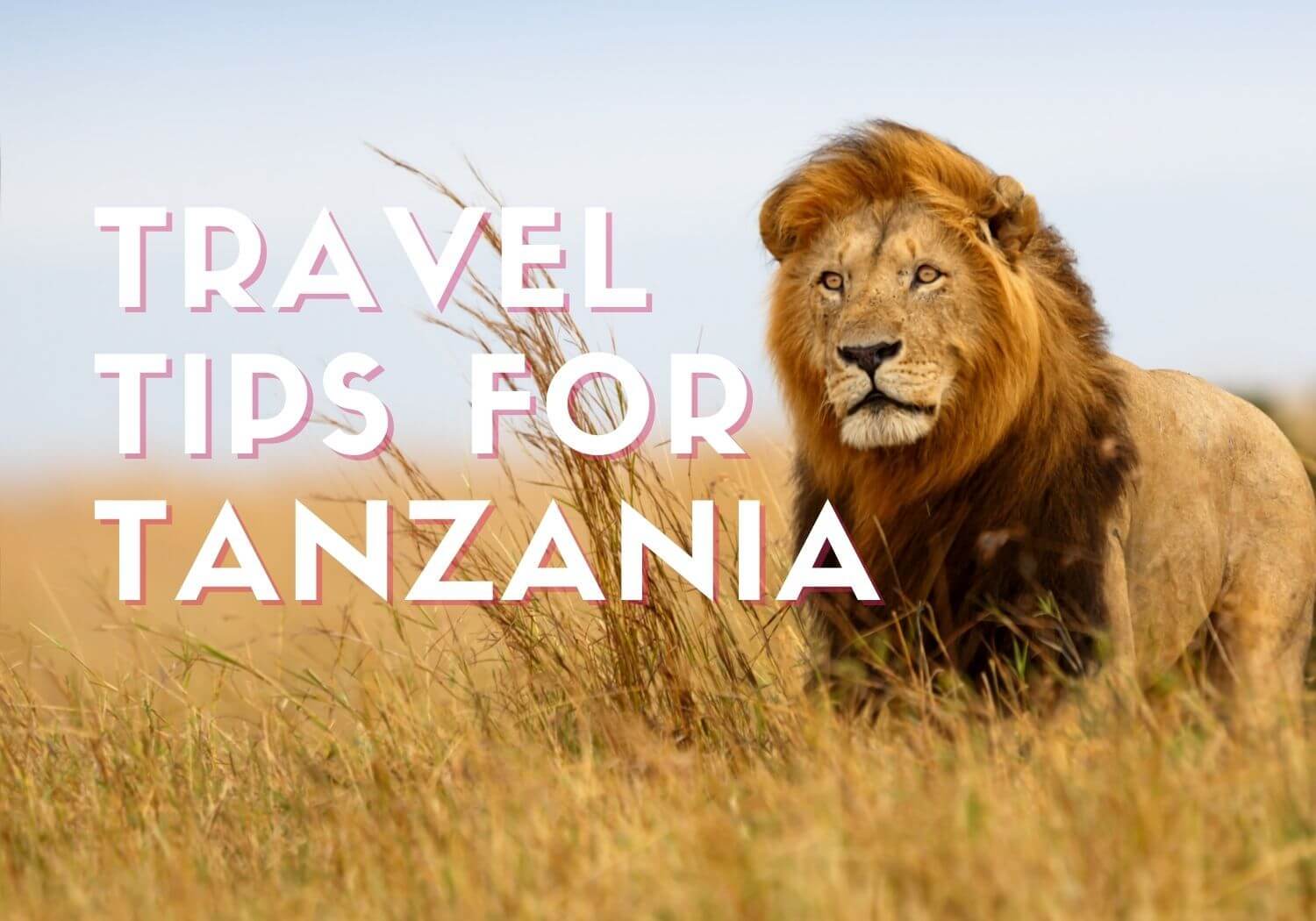Going to Tanzania? Joining one of our Tanzania tours? You’re in the right place.
In this article you will find travel tips for Tanzania, especially for women, movies and shows about the country, books you can read to go deeper into the culture, and Tanzanian music to get into the mood.
Be prepared for your trip with our Tanzania travel tips and get ready for a fabulous trip!
Looking for what to pack? You can find our packing list for Tanzania here.
A brief history of Tanzania
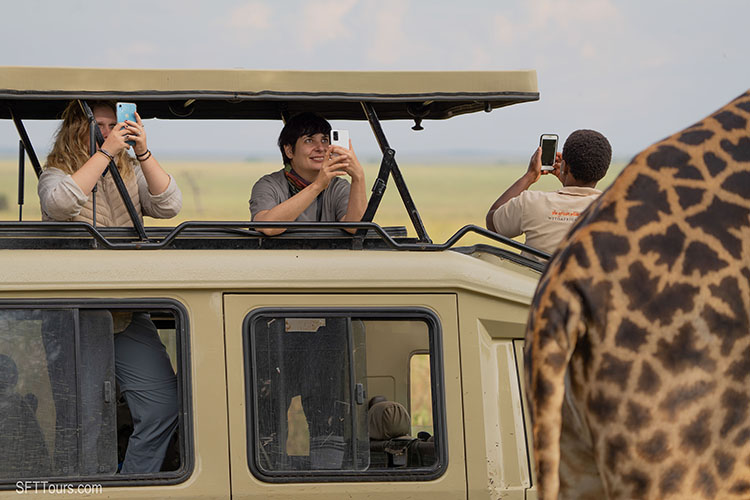
Our Tanzania travel tips start with a bit of background on the country to get you situated.
Tanzania is a massive and very diverse country and it is this diversity that makes it such a great destination for first time safari goers. No matter what your safari goals are, you will be able to fulfil them in Tanzania.
You can go from Mount Kilimanjaro, the highest peak in Africa at 5,895 meters (19,341 feet!), to the beaches of Zanzibar in only a 2h flight. From exploring the Ngorongoro Crater, a massive extinct volcano and caldera that has created a unique eco-system where species thrive, and discovering the remote shores of Lake Tanganika or Lake Victoria to visiting the mountains of Mahale where chimpanzees live or the arid landscapes of Selous or Ruaha, there’s something for everyone in Tanzania.
Because nothing can help us understand a country’s culture and traditions than its past, we want to start off with a brief history of Tanzania.
Of all the East African countries, Tanzania is probably the one with the richest heritage. Some of the first ever human remains were found in Olduvai Gorge by Louis and Mary Leakey and date back 1.75 million years.
The San people lived in Tanzania since 5,000 BC and were later absorbed by the Bantu in 500 AC. Today the majority of Tanzanians are of Bantu origin.
Explorer Ibn Battuta first arrived in Kilwa (today a UNESCO site) in 1331 and found a thriving town that had been populated by a mix of Arabian traders and local people and was the center of slave trade.
Portuguese explorer Vasco da Gama first discovered Tanzania in 1498 making it a Portuguese colony and the center of slavery and ivory trade for just about two centuries.
Omani traders took control of Zanzibar and turned it into a hub of slave and spice trade in 1699 under the control of the Sultan of Oman.
19th – 21st Century
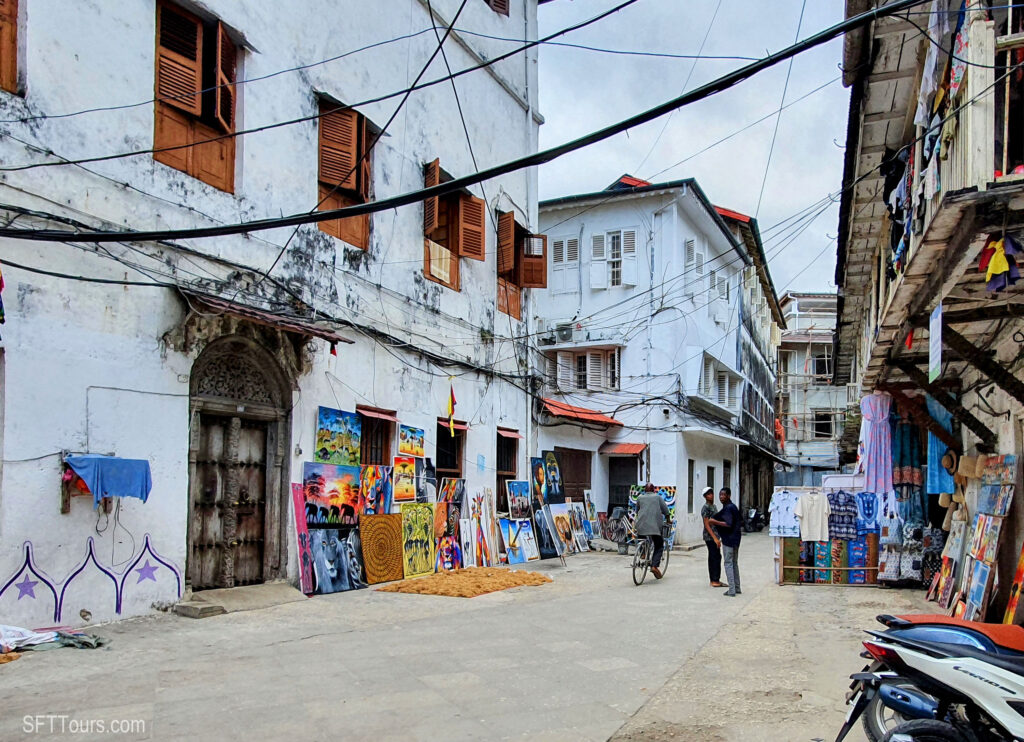
The last two centuries are what defines today’s Tanzania cultural and religious diversity.
Under Omani control and at the hands of Zanzibari Tippu Tip Sultan‘s infamous slave trade empire, which extended all the way to the Congo River, Zanzibar became a wealthy island.
The Sultan of Oman set up his palace on the island and ultimately agreed to abolish slave traffic under the pressure of the British Consul in 1873.
In parallel, Germany started to expand its territories in East Africa conquering parts of mainland Tanzania.
In 1890, British and Germans signed an agreement to divide East Africa whereby the Sultan of Zanzibar maintained authority over Zanzibar and the coast, Britain had a protectorate over the island and Germany maintained control over mainland Tanzania, called Tanganyika at the time.
In the middle of the WWI, Britain, Belgium and South Africa occupied German Tanganyika and by the end of the war, through the Treaty of Versailles, Britain was given control over mainland Tanganyika.
In 1946, The United Nations changed Britain’s rule into a Trusteeship which remained as such until 1961 when Tanganyika achieved independence from Britain with Julius Nyerere as President.
Zanzibar remained under the Sultan’s sphere until 1964 when a violent revolt proclaimed independence and the island merged into Tanganyika to create Tanzania.
The 350 years of Omani influence made Zanzibar a very unique island with strong Arabian feel, traditions and culture. Islam is the dominant religion and it is easy to draw parallelism between Omani architecture and that of Stone Town.
But the country’s history didn’t end with independence.
In 1978, Ugandan dictator Idi Amin invaded a small part of Tanzania to which the country responded by occupying most of Uganda all the way to the capital and forcing Amin to flee.
With the death of Nyerere, the country transitioned to multi-party democracy and has conducted several democratic elections.
The current president, Samia Suluhu Hassan, has been in power since March 2021 and is the first female president of Tanzania. She took over from the previous President who is believed to have died from COVID complications.
Quick facts about Tanzania
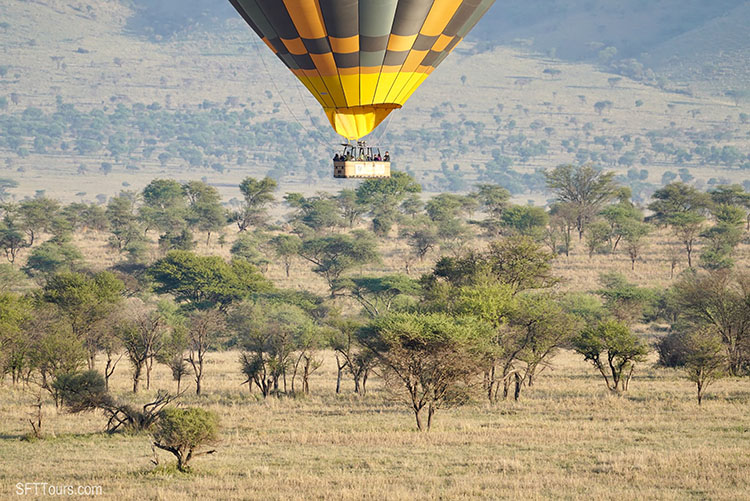
Below you’ll find some quick fire facts to get you started on our Tanzania travel tips.
- Tanzania is located on the Equator and borders Kenya in the north, Uganda, Rwanda, Burundi and the DRC in the west, Malawi, Mozambique and Zambia in the south and the Indian Ocean to the east.
- The name “Tanzania” is a combination of the names of two states that merged to form the country in 1964: Tanganyika and Zanzibar.
- Tanzania is the only producer of tanzanite, a rare blue-violet gemstone found only in the country.
- Despite its tropical location, the weather isn’t warm everywhere due to the country’s high altitude. Along with the warm Indian Ocean coast, Tanzania is home to the second deepest lake in the world and the highest peak in Africa, Kilimanjaro.
- The population is one third Sunni Muslim and one third Christian with the remainder holding traditional beliefs. Zanzibar is mostly Muslim.
- Tanzania has over 62 million inhabitants. Despite most travelers have heard of the Maasai people, Tanzanians belong to over 120 ethnic groups, each with its own language and cultural traditions.
- Although the de facto capital is Dar es Salaam (Swahili for Haven of Peace), Dodoma remains the center of national assembly, even though most people have never heard of it.
- The majority of the population speaks English and Swahili, a combination of the Bantu language with Arabic created by those first Arabian settlers.
- Tanzania is the only country in the world that has designated more than a quarter of its land as protected areas, including 16 national parks and 29 game reserves.
- Kilimanjaro is not just the tallest mountain in Africa but also the tallest free-standing mountain in the world. When you fly over Tanzania going anywhere south, you can see its snow-capped peaks from the plane’s window. You can climb it with an all female crew with us on International Women’s Day every year!
- One of the most famous Tanzanians is Freddy Mercury. Born in Zanzibar, he emigrated to the UK with his family when he was young but you can still see his house if you visit.
- There are 7 UNESCO inscribed locations in Tanzania including Ngorongoro Conservation Area, Kilimanjaro National Park, Serengeti National Park, and Stone Town in Zanzibar.
- The Tinga Tinga art style originated in Tanzania and is known for its brightly colored paintings depicting animals and scenes from daily life. As a visitor, you can take a lesson in this art form and make your own painting.
Tanzania travel tips
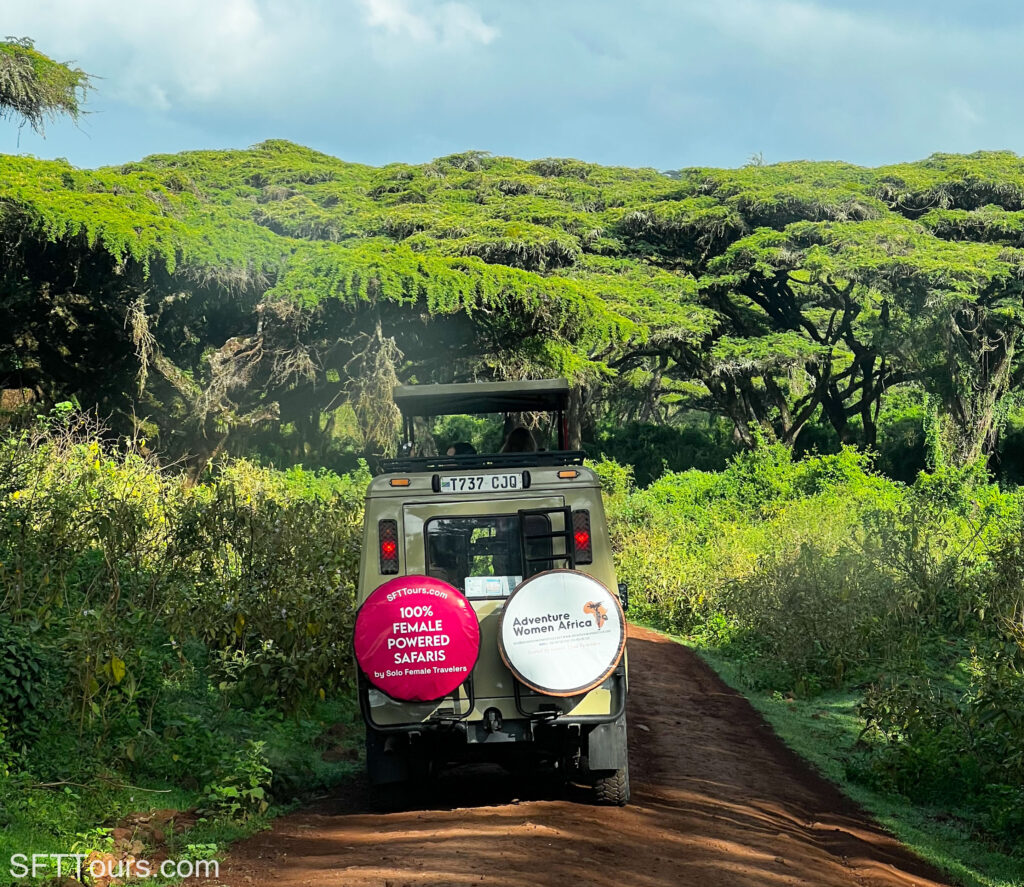
This is an amazing country but there are some things you need to know before visiting Tanzania in order to make the most of your trip. In this section, we aim to tell you some Tanzania travel tips and advice so you can be fully prepared. We hope you’ll find them useful!
Passports and Visa
The most important item one needs to travel is a passport and a visa, so in this section we are sharing a few Tanzania travel tips for those two items.
- Process your visa in advance. Everyone needs a visa to visit Tanzania and this can be obtained in advance and online or on arrival at the airport. We recommend you get your visa ahead of time to avoid the long queues at the airport. The process is easy and can be completed on the official website of the Government.
Fees vary by nationality ($50 for most passports and $100 for US passports) and the visa process can take up to 21 days so apply accordingly. Please beware of websites that are not the official one and which will charge additional fees for what you can essentially do yourself on the Government’s website. If you see fees different from what I mentioned earlier, you know you are not on the official website.
- Passport validity. Besides the visa fees, travelers to Tanzania need to ensure they have a passport that is valid for 6 months after their departure and that has at least 2 empty pages. You may also be asked for your onward flight details to return home.
Health and safety
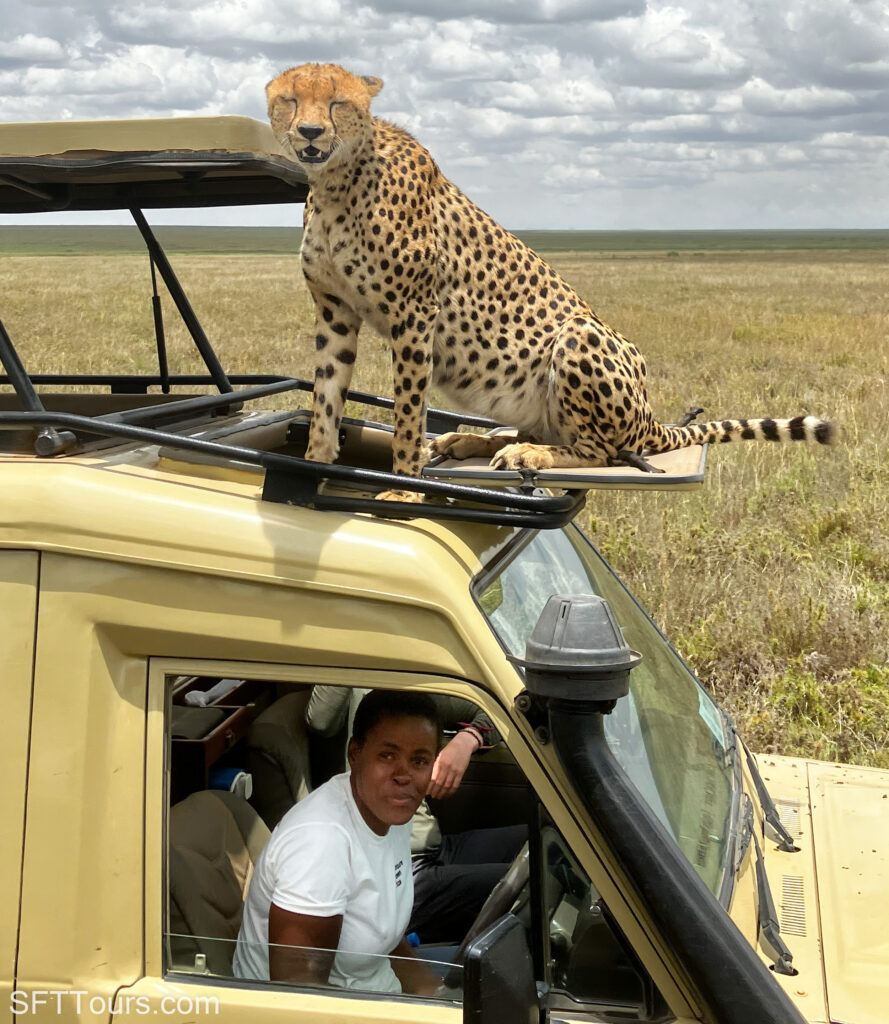
Nobody likes to be sick when traveling and less so when far away from urban centers and medical facilities. Below are some travel tips for Tanzania that relate to health and safety.
- Our Safety Index: When we conducted our first Solo Female Travel Survey, one of the most relevant take-aways was that women who travel solo unanimously worry about their personal safety. The best countries for first time solo female travelers all have safety in common. That’s why we created the first and most complete resource for women who travel solo to find safety information by country or destination.
With safety data coming from the US and UK Travel Advisories and the Global Peace Index, the index considers factors like the risk of theft, scam and harassment, as well as analyzing attitudes towards women in each country to rank each country from 1-4, 1 being the safest and 4 being the most dangerous for solo female travelers.
Tanzania is currently rated as a decently safe destination for solo female travelers on our safety index. Exercise regular caution and review our safety tips for solo female travelers to ensure you stay safe and have a rewarding and empowering travel experience. - Get vaccinated in advance. Traveling to Tanzania also requires you to take the necessary precautions to keep yourself safe from potentially deadly diseases. Several inoculations as well as anti-malarial drugs are recommended.
Consult with your doctor ahead of the trip, at least 6 weeks before departure, so you leave enough time for the vaccines to take effect. Depending on where you live, some vaccines may not be immediately available from your GP and may have to be ordered.
The CDC recommends being up-to-date on all routine vaccinations (measles, mumps, rubella (MMR), diphtheria, tetanus, pertussis, chickenpox and polio) and take proper precautions against hepatitis A and B, typhoid, cholera and anti-malarial drugs which often need to be taken before, during and after the trip. Yellow fever vaccination may also be required but you should double check with your doctor.
IMPORTANT: If you are traveling via Ethiopia or Kenya and spending more than just a few hours in the country, proof of Yellow Fever vaccination may be required and you will need to show it before embarkation. Confirm before booking your tickets and before traveling.
- Bring all the medication you’ll need. Most visitors to Tanzania will go on safari to one of the many incredible national parks. National parks and conservation areas in Tanzania are remote and that means you can’t easily replenish your medication or buy simple over the counter medication such as paracetamol, so you should bring enough for the duration of your trip.
IMPORTANT: Make sure any prescription medication comes in its original pharmacy packaging, and with the corresponding doctor note and prescription to avoid issues at the border. What may be legal in your country, or even sold over the counter, could be a controlled substance in Tanzania. It is your responsibility to check that whatever medication you bring can indeed be taken into Tanzania and you should call the Tanzanian Embassy to confirm.
- Get that coverage. We never leave the house without purchasing extensive medical and travel insurance coverage and this is why we make it mandatory to join our tours, but in the case of Tanzania this is extra important.
Most visitors to Tanzania go on relatively relaxing trips that don’t require much physically exertion (except for those who climb Kilimanjaro), but unexpected accidents do happen, and given the remote nature of the parks, even the smallest of incidents may require medical evacuation, sometimes even on a medically-escorted flight. The cost of that could run in the hundreds of thousands.
I broke an arm falling from a horse in South Africa and my medical bill was $20,000 and a colleague of mine was stung by a stingray while going for an evening walk on the beach in Zanzibar and needed to be airlifted back to Dubai the cost of which ran into the 6 figures. Don’t risk it!
The best travel insurance will differ for each traveler, depending on the nature, style, and length of their trip, so we recommend using an aggregator and comparison tool such as Travel Insurance Masters to find the right one for you depending on what coverage you want, age, location, trip, etc.
Essentials
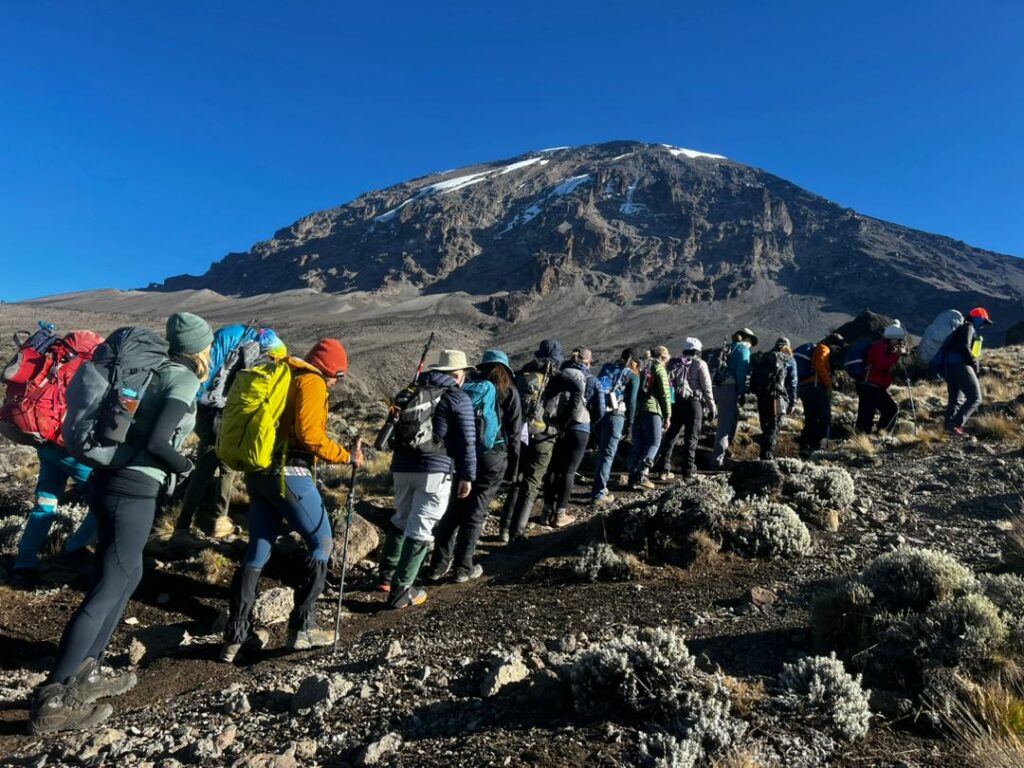
Below are some additional Tanzania travel tips and travel essentials to consider before a trip to Tanzania.
- Stay connected if you must. I started working in Tanzania in 2007 at a time when no more than 10% of the population had a mobile phone. Our job entailed helping local telecom providers bring services to the rest of the population. Today, everyone has at least one phone, and reliable 4G coverage reaches most urban centres, but can be spotty in rural and remote areas.
While we advocate for a digital detox, and this is the perfect occasion to do so, if you wish to stay connected, you can buy a SIM card at the airport or in town.explore roaming options with your home mobile provider, get a local SIM card at the airport or in town or buy an eSIM like AloSIM or Airalo.
Tip: Make sure your phone is unlocked so that a foreign SIM card or eSIM will work, and if you’re getting a physical SIM card, let the store staff set it up for you so they can enter any necessary settings. Don’t leave the shop before making sure you have data.
- Leave plastic at home. Since 2019, Tanzania has banned the use of plastic bags in the country. That means that they will not be allowed in and your luggage will be checked upon arrival to ensure you don’t carry any.
This includes the small plastic bags that you may put your toiletries in to go through customs checks unless they are ziplock bags that you will be taking back with you. If you have any plastic bags, leave them at home and help fight the global use of plastic.
- Bring small US notes. The local currency used in Tanzania is the Shilling but USD / EUR are widely accepted in tourist places (change will be given in Shilling) and you can tip in USD / EUR which is often preferred. Unless you plan to go truly off the beaten path, US Dollar notes will be enough.
Make sure to break the larger notes down into small denominations (It’s unlikely anyone will have change for $100 / 100 EUR) and check that your bank notes are in pristine condition. In the case of USD, make sure your notes are newer than 2009 as older notes are easier to forge and thus not accepted (the date is on the note itself). Teared, dirty or creased notes may not be accepted.
- Credit cards are not used outside of hotels and some restaurants. Connectivity in the parks may be difficult so card readers may not work, so always bring cash as a back up.
- Don’t be fooled by the weather. As explained in our Tanzania packing guide, the weather can change a lot from day to night in the popular northern safari areas of the Serengeti and Ngorongoro with variations of 10-15 degrees Celsius. As soon as the sun sets, temperatures drop and sometimes, it can catch travelers unprepared.
The dramatic change in temperatures on a given day is because of altitude and this often surprises visitors who see Tanzania’s location on the Equator and assume the weather will be hot.
Zanzibar or Dar es Salaam are a different story because they are at sea level and humidity is high, but while on safari, expect to need a jacket in the evenings while daytime temperatures will call for shorts and a tshirt.
- Pack light and soft. Any trip in Tanzania involves moving about in 4WD cars and tiny propeller planes, and changing accommodation several times, and while there will always be staff ready to lend a hand, there is nothing more mindful than packing light.
In the bush, this is essential because propeller planes, like the one we will take from Serengeti to Zanzibar, have a maximum baggage weight limit of 15kg per guest so you really need to pack light or you’ll destabilise the entire aircraft. It’s also important to bring a soft bag instead of a hard case so it can be more easily stacked up at the back of the plane or car. Hard cases are harder to manoeuvre and require more space.
Local culture and customs
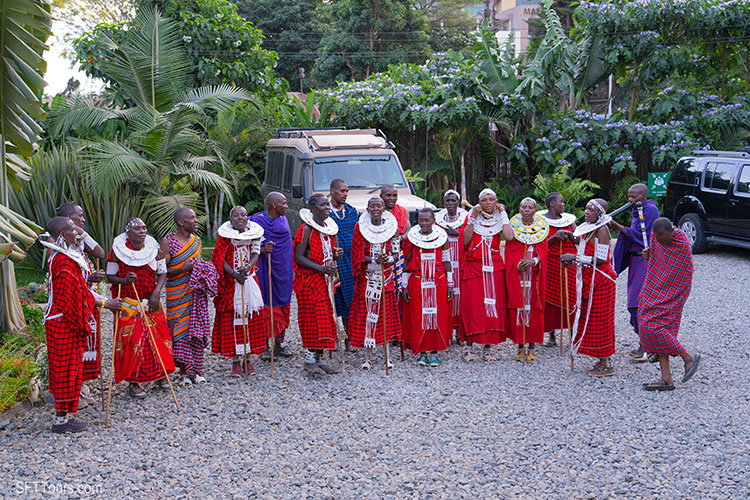
Our travel tips for Tanzania would not be complete without talking about the local customs and culture in Tanzania which may be different from what you are used to.
- The concept of time. You may have heard about “African time” as a metaphor or even a stereotype. If you come from a large city in the West, you will understand this concept as soon as you land in Tanzania.
Everything seems to be a bit more laid back, people are less in a rush and there is a more relaxed sense of urgency, a looser idea around what punctuality means. Things move slowly and at their own pace and nobody ever seems to be in a rush. Being precisely on time is not as important either, and 15-20min after an agreed time is still considered being on time.
If you come for business and are on a tight schedule, like I used to, this can be really frustrating, but if you are on holidays we recommend embracing this new rhythm, sitting back and relaxing, time is only a reference point and patience will get you farther than getting stressed over things being delayed.
If you are interested in the anthropological perspectives on this, check out this research study.
- Cultural diversity. As mentioned before, Tanzania is a very diverse country with more than 100 different ethnic groups, countless languages spoken and a wide range of traditions and beliefs.
Although the Maasai have become a symbol of the country, they are a very small percentage of the population and estimated to account for just half a million of the 62 million people living in Tanzania. Besides the Maasai, there are several other ethnic groups. Learn more about the indigenous people of Tanzania here.
- Dress appropriately. As mentioned in our packing guide, a majority of Tanzanians are Christian, but 30% of the population follow Islam and live in the coastal areas and in Zanzibar.
Islam arrived in Tanzania with Omani traders who settled on the Spice Island. When walking in Zanzibar, especially in Stone Town, we recommend dressing modestly out of respect for the local culture. Skirts below the knee and capris trousers are better than shorts, and a blouse or tshirt is more respectful than a tank top.
- Ask for permission not forgiveness. During your trip in Tanzania, you will undoubtedly meet members of the local tribes, including the well known Maasai. While locals are always friendly and ready to chat, you should be mindful and ask before taking photographs. Avoid taking photos of minors without the parent’s consent.
- Learn some basic Swahili. While you probably think you don’t know any Swahili words you can thank the Lion King for some basic Swahili. For example, simba is lion, jambo is hello, hakuna matata means no worries and rafiki is friend. To say thank you, read asante sana.
What to expect on safari
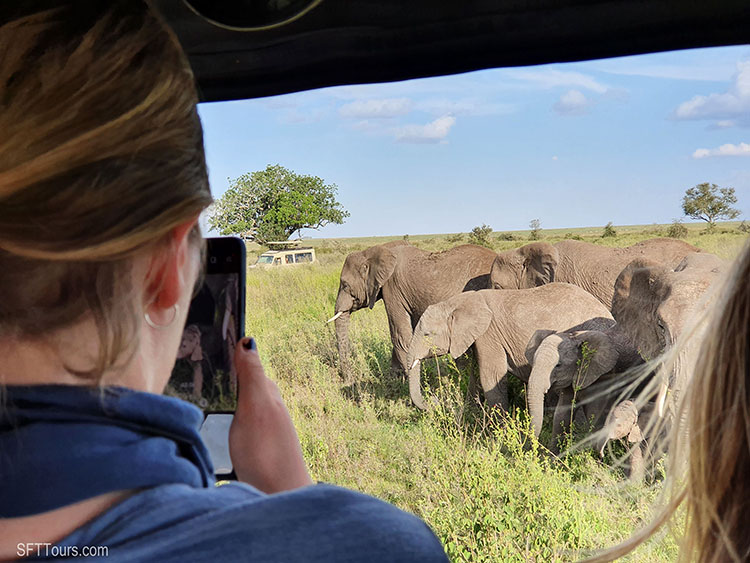
Because everyone visiting Tanzania comes for the safari, some of the most important things you need to know before traveling to Tanzania revolve around game drives. Check out our packing list for details on what to wear and read below for useful Tanzania safari travel tips.
- Open top 4WD. Game drives are usually done in purpose-built 4WD cars, oftentimes Toyota Land Cruisers. These vehicles have been designed for safaris and have 3 rows of seats at the back and roofs that can pop open when tracking wildlife so you can stand up and watch up closely.
Having 3 rows of seats means that there is enough space for 6 guests to sit by the window with direct access to viewing opportunities for everyone. Our tours have 5-6 guests per car to ensure optimal viewing but you should always ask your safari provider how many guests to car ratio they fit.
Most safari trucks can fit up to 8 guests but it may be a bit packed if everyone has their own day pack, camera bags, etc.
- Bumpy roads. Besides the set up, it’s good to remember that while the main safari parks have well maintained gravel roads or paths (and the Serengeti mostly does), it can get bumpy at times. This means that you should make sure your day bag can fully close (instead of a shoulder or tote bag you’d be using at the beach) so your items don’t end up flying everywhere when the car hits a bump.
- Small propeller planes. As mentioned before, besides the larger domestic flights, the majority of internal flights in Tanzania, including the one we will take from the Serengeti to Zanzibar, happen on small propeller planes that can carry 12 to 19 guests. These planes do not reach the altitude of commercial flights and do not pressurise.
We love them and they make for amazing sightseeing opportunities (imagine spotting zebra or giraffes from the plane window!), but if you have altitude sickness, you may want to consult with your doctor to make sure you are prepared, this is a Tanzania travel tip that you are best to be aware of.
- High park fees. While Tanzania is an amazingly popular safari destination, it also draws much of its revenue from safari goers and the park and conservation fees are very high. You may have noticed that over $1,000 of the price of our tours to Tanzania goes towards park fees and that is for just 6 nights in safari lodges.
Car entry fees are over $200 per vehicle and fees per person to enter some of the popular parks near $70 per person per day, there are also additional fees for sleeping within the parks of around $60-70. These fees are to be paid regardless of the level of accommodation you stay at making a budget trip to Tanzania quite difficult.
- Wildlife is wild. Animal attacks are rare but they could happen. Ultimately, this is not a zoo – you are in the wild. Safari vehicles appear as large animals to wildlife and this is why they would not attempt to attack.
However, you should keep arms and legs inside the vehicle at all times, avoid screaming or speaking loudly (it scares wildlife) and never get out of the vehicle while inside the park. Smoking is not allowed while on safari and you should always follow the instructions and directions of the guide / driver.
- Take nothing but memories. Never feed wild animals or take anything from the parks back home with you including stones, bones or plants. Bring your best camera equipment on safari. You will need a good zoom lens to capture clear pictures of wildlife which will be several meters away.
We encourage you to disconnect and leave any online activity for your time at the lodge. Phones should be set to silent and taking calls while on safari is disrespectful to other guests and detrimental to the game viewing experience as human voices scare wildlife away. The use of drones is forbidden across Tanzania’s national parks.
- Dress code. You should dress appropriately on safari following our packing list suggestions of neutral colors, long sleeves and trousers to protect from the sun and mosquitoes and avoid wearing perfume which can be smelled by animals from far away and alerts them to the presence of humans.
Local cuisine

Food in Tanzania usually includes meat or fish by the coast, cooked simply, and with a side of ugali and vegetables. However, most travelers to the country will be served international food often buffet style.
- Traditional food. Tanzanian food is relatively simple and similar to that of neighbouring Uganda and Kenya. Meals consist of the rather bland ugali (maize meal) with a gravy that usually contains meat.
On the coast, you’ll find great grilled fish and nyama choma, or grilled barbecue meats, are commonly found in the cities. Other foods you may find are rice and fried plantain, some beans and peanuts. However, safari lodges and camps serve international cuisine and rarely offer local food options. If you are keen to try, ask the chef to prepare some for you.
- Local beer. While local food is not the most adventurous, Tanzania has a few local beer brands that go perfectly with the weather. Both Kilimanjaro and Safari are well known and widely available brands produced by Tanzanian Breweries, you can’t leave without at least trying them once.
Tipping in Tanzania
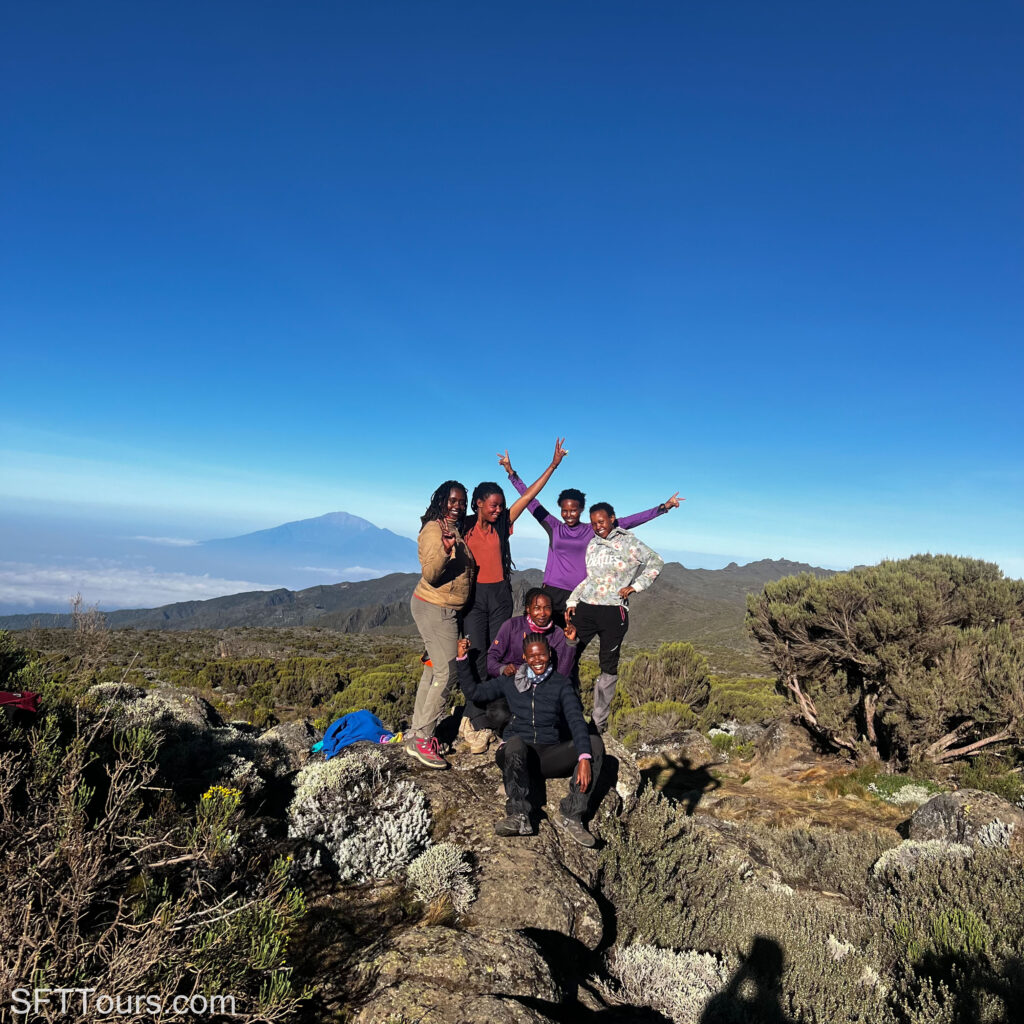
Tipping is always a personal decision based on the service you have received. However, like in the US, Tanzania tourism staff (especially those working in the safari industry) rely on tips to make a good living as salaries are extremely low.
You can tip in Shilling or USD / EUR but USD / EUR will be preferred. Bring lower denomination notes for small tips and make sure that the USD notes you carry are in perfect state (not teared) and newer than 2009.
Below is a guide for how much to tip the various people who will serve you while in Tanzania:
- City/Airport Transfers: A standard tip for the driver who transfers you from the international airport to your initial city hotel is $20 USD per vehicle. If your transfer is longer than a couple of hours, consider doubling that amount to account for the driving time and roundtrip distance.
- City Hotel Staff: In city lodging, there is often a tip box located near reception to be divided equally among the staff (if not, you may leave the tip in your room). $5 USD per person per day is generally appropriate for the room attendants / butler. When dining at the city hotels, please tip as you normally would in any restaurant.
- City Tour/Driver: Tips for a city tour or driver should be approximately $20 USD per vehicle for a full day.
- Safari Driver/Guides: A guide will be with you at each camp (or if you have hired a private guide, she will move from camp to camp with you). It is customary to tip your safari guide at the conclusion of each camp stay or at the conclusion of your safari if they stay with you for the duration of your trip. We recommend a minimum of $30 USD per person per day for safari guides based on how well they did their job.
- Safari Camp Staff: There is often a tip box in the main tent area to leave your gratuity at the end of your stay for the camp staff. While on safari, you will not need to tip every person who handles your bags or brings you a drink. Simply reward great service at the end of your stay for all to share. We suggest tipping $5-10 USD per person per day.
- Tipping on Kilimanjaro: Tipping will depend on how many support staff will join your climb. All hiking teams have porters, guides and support staff such as chefs, toilet porters, etc. You should check with your local operator how many people will support your climb and specific tipping guidelines for each to calculate how much to bring.
Tipping on Kilimanjaro is done at the end of the hike in a tipping ceremony filled with singing and gratefulness. We also know from all guests, that there will always be someone (a porter, a guide) who will go the extra mile to make your climb successful, and naturally, you will want to appreciate that with a tip.
Not having enough cash to give may make you feel uncomfortable, so we always recommend bringing extra.
Our tipping guideline on Kilimanjaro: There are guidelines for salaries on Kilimanjaro, but we pay all our crew well above that, and have more staff than any other company to make sure our guests are well taken care of. Additionally, we always have trainee guides / porters so we can give them the on the job experience they need to be hired elsewhere, this is our company mission and it means everything to us.
As a result, our Kili climbs have 6 porters per 1 guest, 1 guide for every 2 guests, plus 2 chefs, 2 waiters, 2 toilet crew members, and 2 medical kit porters as we have 2 oxygen kits, each with separate oxygen cylinders.
If there are 10 guests, there will be 60 porters, 4 guides, 8 support staff for a total of 72 crew members, or 7 staff per guest. We recommend about $350 per person for tips for everyone, which is equivalent to about $50 per crew member for the 7 day hike.
Music and bands from Tanzania
Tanzania has its own vibe and its own music genre, Bongo Flava, a mix of Reggae, Afrobeat, Blues, Rasta and Dancehall with local musical traditions like Taarab and Dansi. It sounds a bit like Reggaeton but with an African twist.
The music originated in Dar es Salaam, the city which also gives it its name. Bongo is a derivative of a nickname used for the city and flava stands for flavor. Although the genre is new (1990s), it has quickly expanded across East Africa and even the US. You can listen to some of the Bongo playlists on Spotify.
Books about or set in Tanzania
Tanzania has inspired many movies, epic adventures and books, some of which have become classics. Below are some recommendations for inspiring, historic and interesting reads.
- In the shadow of man is Dr. Jane Goodall’s account of life with the chimps at Gombe. This is where she started her primate work getting to know the wild animals and establishing a rapport with them which has allowed us to understand more about these creatures.
- How I found Livingston has become one of the most legendary adventure books of all times thanks to the famous sentence, “Dr Livingston, I presume” which Stanley muted when he finally found the Scottish missionary and explorer Livingston after months of treacherous plodding through tribal grounds and territories of East Africa. The book is extremely detailed, at times impossibly, specifying everything the expedition carried, how many meters of fabric were to be traded, what beads were valuable and in what colors, etc. and succeeds in explaining the need for diplomacy to survive exploration across East Africa at the time.
- Through the dark continent is the sequel to How I found Livingston and relates Stanley’s second trip to Africa. Sponsored by the New York Herald and the London Daily Telegraph to explore central Africa from Zanzibar to the Atlantic Ocean, this epic journey was brutal on his team and practically only a third of his expedition survived, including himself.
- Green hills of Africa is Hemingway’s second non fiction book and tells the tale of the month he and his wife spent on safari and big game hunting in East Africa in 1933. Besides the description of his hunting expedition and tribulations finding game, Hemingway also discusses writers, as if the safari was almost secondary.
- North of south by Trinidadian author Shiva Naipaul is essentially a travel book that focuses on the author’s trip to Kenya, Tanzania and Zambia in the 1970s as most countries achieve independence from their colonial regimes.
- Among the Maasai is a true story by American teacher Juliet Cutler who moved to Tanzania to teach at the first school for Maasai girls and stayed for 20 years.
- The tree where man was born is a fantastic tale of the observations of author Peter Matthiessen’s many trips to East Africa. You can learn about the scientists and researchers making ground breaking discoveries, the day to day life of locals, or what safaris were like in the 1970s when Tanzania and East Africa were becoming independent countries.
- Paradise is a fictional novel that recounts the story of a young boy sold to a wealthy Arab merchant in an imaginary village in Tanzania at the turn of the 20th century. The boy joins the merchant’s caravan as it embarks on a trading expedition in East Africa.
Movies about or shot in Tanzania
Below is a list of documentaries, movies and shows you can watch to learn more about Tanzania or simply marvel at its beautiful landscapes.
- National Geographic Islands is on Netflix and has an episode where Zanzibar and Mafia Islands are featured in detail, with monkeys and other wildlife taking centerstage.
- Tanzania, a Journey within is the story of a Tanzanian man and an American woman who travel to Tanzania and explore the country’s extremes, from poverty and AIDs to the beautiful landscapes.
- As old as my tongue is a documentary about singer Bi Kidude that was shot on location at her house in Zanzibar.
- The African Queen stars Humphrey Bogart and Katharine Hepburn in this classic 1951 African romantic adventure into Tanzania. The movie gave Bogart his own Oscar and has been preserved for its cultural and historical value by the National Film Registry and the Library of Congress.
- Darwin’s nightmare is a documentary that showcases the worst effects of globalization. Focusing on the effects of the introduction of Nile perch fish into Lake Victoria which killed all indigenous species, the documentary exposes the effects on people and the eco-system as it exposes the arms trade the planes who come to collect the fish for export to Europe bring in.
- Africa’s Elephant Kingdom is a Discovery Channel mini documentary that documents the life of African elephants in Kenya and Tanzania as narrated by the elephants themselves.

